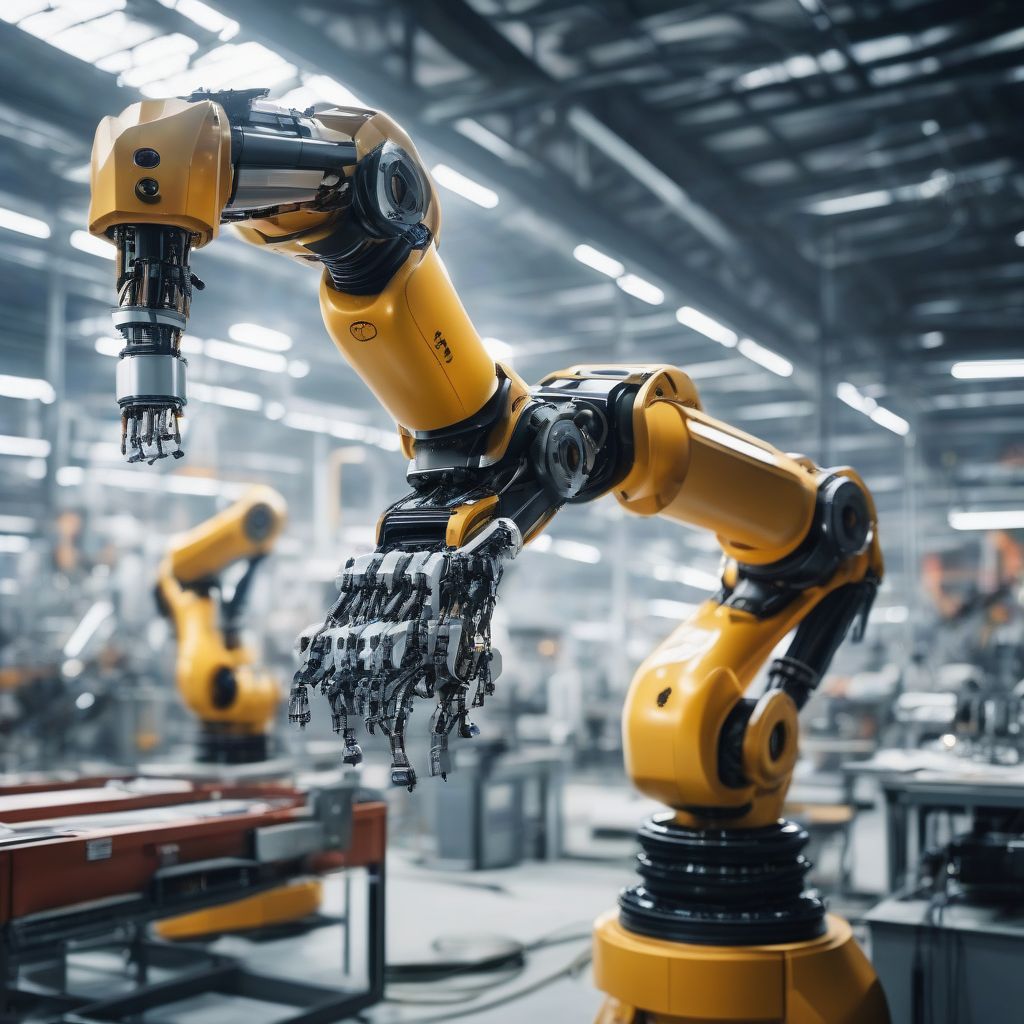Imagine a world where robots seamlessly integrate into our lives, assisting us with everyday tasks, revolutionizing industries, and even pushing the boundaries of human capabilities. This isn’t science fiction; it’s the reality that’s rapidly unfolding thanks to the latest breakthroughs in robotics technology.
As a nutritionist and meal prep coach, I’m passionate about using innovation to improve people’s lives. While my focus is on healthy eating, I’m constantly amazed by how robotics is transforming our world, promising a future filled with exciting possibilities.
A New Era of Robotics: Smarter, More Adaptable, More Capable
Gone are the days of clunky, pre-programmed robots confined to factories. Today’s robots are smarter, more adaptable, and capable of performing increasingly complex tasks. This evolution is fueled by groundbreaking advancements in artificial intelligence (AI), machine learning, sensors, and materials science.
Key Breakthroughs Pushing the Boundaries
1. AI-Powered Intelligence and Learning:
One of the most significant breakthroughs is the infusion of AI into robotics. Robots are no longer limited to pre-programmed instructions. They can now learn from their experiences, adapt to changing environments, and even make decisions based on real-time data. This has opened up incredible opportunities in fields like:
- Healthcare: Surgical robots with AI assistance can perform minimally invasive procedures with enhanced precision, leading to faster recovery times and fewer complications.
- Manufacturing: Robots can work alongside humans in dynamic environments, adapting to changes in production lines and handling delicate tasks with greater dexterity.
- Logistics and Delivery: Autonomous drones and robots are being used to optimize delivery routes, reduce transportation costs, and make logistics more efficient.
2. Advanced Sensors and Perception:
Robots are now equipped with advanced sensors that allow them to “see,” “hear,” and “feel” the world around them with incredible accuracy. These sensors, combined with sophisticated AI algorithms, enable robots to:
- Navigate complex terrains: Robots can traverse uneven surfaces, avoid obstacles, and operate safely in unstructured environments.
- Interact with humans more naturally: Robots can recognize faces, interpret gestures, and engage in more natural communication, making them suitable for roles in customer service and companionship.
- Perform delicate tasks: Robots can handle fragile objects, work with intricate tools, and perform tasks that require a high level of precision.
3. Collaborative Robotics (Cobots):
The rise of cobots signifies a shift from robots replacing humans to robots working alongside humans. Cobots are designed to collaborate with human workers, enhancing safety and productivity in various industries. They can assist with:
- Heavy Lifting and Repetitive Tasks: Cobots can reduce workplace injuries by handling physically demanding or repetitive motions, allowing human workers to focus on more specialized tasks.
- Precision Assembly: Cobots can assist with intricate assembly tasks, ensuring accuracy and consistency in manufacturing processes.
- Training and Skill Enhancement: Cobots can act as interactive training tools, guiding and assisting human workers in learning new skills.
 Robotic Arm in a Modern Factory
Robotic Arm in a Modern Factory
4. Soft Robotics: Inspired by Nature
Drawing inspiration from nature, researchers are developing soft robots using flexible materials that mimic the movements of living organisms. These robots have the potential to:
- Revolutionize healthcare: Soft robots can be used for minimally invasive surgery, targeted drug delivery, and even as assistive devices for people with disabilities.
- Explore challenging environments: Soft robots can navigate confined spaces, interact safely with delicate ecosystems, and be deployed in disaster relief efforts.
- Transform human-robot interaction: The soft, compliant nature of these robots makes them safer and more comfortable for humans to interact with, paving the way for robots in homes and everyday life.
The Impact of Robotics: Challenges and Opportunities
While the latest breakthroughs in robotics offer tremendous promise, they also raise important ethical and societal considerations.
- Job Displacement: As robots become more sophisticated, concerns about job displacement in certain sectors are valid. It’s crucial to focus on reskilling and upskilling the workforce to adapt to the changing job market.
- Ethical Considerations: As AI-powered robots make decisions that impact human lives, it’s essential to establish clear ethical guidelines for their development and deployment.
- Data Security and Privacy: Robots often collect and process large amounts of data, raising concerns about data security and privacy. Robust safeguards must be implemented to protect sensitive information.
Despite these challenges, the potential benefits of robotics are immense. By embracing these advancements responsibly, we can unlock a future where robots enhance our lives, solve complex problems, and help us create a more sustainable and equitable world.
Looking Ahead: A Future Shaped by Robotics
The field of robotics is constantly evolving. As research and development continue to accelerate, we can expect even more groundbreaking advancements in the years to come. Some of the key trends to watch include:
- Increased Personalization: Robots will become more personalized, adapting to individual needs and preferences. We’ll see robots tailored for specific tasks in healthcare, education, and home assistance.
- The Rise of Swarm Robotics: Inspired by the collective behavior of insects, researchers are developing swarms of robots that can work together to accomplish complex tasks. This technology has applications in environmental monitoring, agriculture, and exploration.
- Human Augmentation: Robotics is blurring the lines between humans and machines. Exoskeletons and prosthetic limbs are enhancing human capabilities, while brain-computer interfaces hold the potential to revolutionize how we interact with technology.
The latest breakthroughs in robotics technology are ushering in an era of unprecedented innovation. By embracing these advancements responsibly and addressing the associated challenges, we can harness the power of robotics to create a brighter and more prosperous future for all.
[amazon bestseller=”robotics”]
